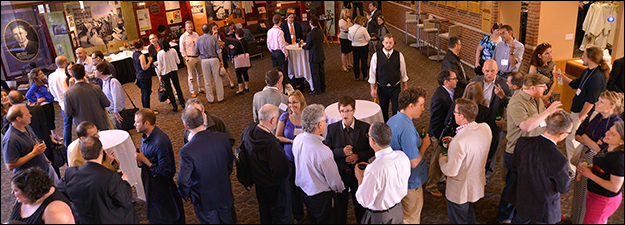Giving Birth to Christ in Later Medieval Mystical and Devotional Literature
Sponsoring Organization(s)
Jean Gerson Society
Organizer Name
Jeffrey Fisher
Organizer Affiliation
Carroll Univ.
Presider Name
Daniel Hobbins
Presider Affiliation
Univ. of Notre Dame
Paper Title 1
Mary in Gerson's Commentaries on the Song of Songs and the Magnificat
Presenter 1 Name
Jeffrey Fisher
Paper Title 2
Gerson's Collectorium super Magnificat and Scriptural Performance
Presenter 2 Name
Matthew Vanderpoel
Presenter 2 Affiliation
Univ. of Chicago
Paper Title 3
"Except for the Unfaithful Jews": Jewishness and Exclusion in Mystical Experiences of Christ's Birth
Presenter 3 Name
Wendy Love Anderson
Presenter 3 Affiliation
Washington Univ. in St. Louis
Paper Title 4
Spiritual Pregnancy and Theological Ascendancy in the Birth of Gerson's Mystical Theology
Presenter 4 Name
Nancy McLoughlin
Presenter 4 Affiliation
Univ. of California-Irvine
Start Date
16-5-2015 10:00 AM
Session Location
Fetzer 2030
Description
The concept of spiritual birth has been a constant in the history of Christian thought and devotional practice. With Eckhart, Ruusbroec, and others in the fourteenth century, it takes on added depth, with the idea of the "birth of the son in the soul." Taken together with the rise of Marian devotion, mystics and theologians in the West had a new storehouse of imagery for thinking both about the transformation of individual souls and the uniqueness of Mary as an object of devotion. Even Mary's uniqueness becomes a way of thinking about the potential of the soul for union with God. In Jean Gerson, in particular, we see these themes come together. His late commentaries on the Magnificat and on the Song of Songs zero in on Mary as both mother of Christ, in one respect, and the most perfect spouse, in another respect. She is thus doubly exemplary. Recent publications, including Bernard McGinn's Varieties of Vernacular Mysticism (1350-1550), have begun to pay more attention to Gerson's creativity in mystical theology, both in his later work, as yet to be fully charted, and even his earlier work, which has until very recently been considered exhausted from a scholarly point of view, and in general not very interesting. In this session, we hope to draw attention to the ways in which these key images of transformation and development were expanded and extended in the fourteenth and especially in the fifteenth centuries, both generally, and particularly in the work of Gerson, not only at the end of his life, but across his entire career.
Jeffrey Fisher
Giving Birth to Christ in Later Medieval Mystical and Devotional Literature
Fetzer 2030
The concept of spiritual birth has been a constant in the history of Christian thought and devotional practice. With Eckhart, Ruusbroec, and others in the fourteenth century, it takes on added depth, with the idea of the "birth of the son in the soul." Taken together with the rise of Marian devotion, mystics and theologians in the West had a new storehouse of imagery for thinking both about the transformation of individual souls and the uniqueness of Mary as an object of devotion. Even Mary's uniqueness becomes a way of thinking about the potential of the soul for union with God. In Jean Gerson, in particular, we see these themes come together. His late commentaries on the Magnificat and on the Song of Songs zero in on Mary as both mother of Christ, in one respect, and the most perfect spouse, in another respect. She is thus doubly exemplary. Recent publications, including Bernard McGinn's Varieties of Vernacular Mysticism (1350-1550), have begun to pay more attention to Gerson's creativity in mystical theology, both in his later work, as yet to be fully charted, and even his earlier work, which has until very recently been considered exhausted from a scholarly point of view, and in general not very interesting. In this session, we hope to draw attention to the ways in which these key images of transformation and development were expanded and extended in the fourteenth and especially in the fifteenth centuries, both generally, and particularly in the work of Gerson, not only at the end of his life, but across his entire career.
Jeffrey Fisher


